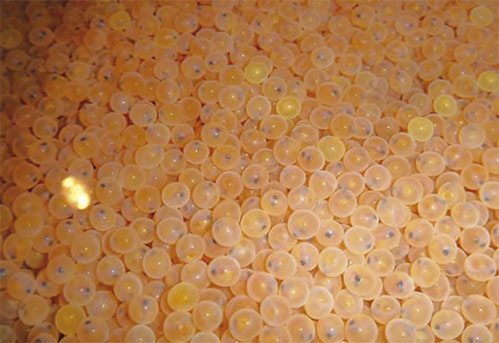Producción de alevines de trucha arcoíris en INIA Táchira
Abstract
The rainbow trout Oncorhynchus mykiis, is native to the eastern coast of the Pacific Ocean, from Alaska to northern Mexico, currently it is distributed in all parts of the world where cold and crystalline waters allow its acclimatization, both in the hemisphere north as in the southern hemisphere.
In the state of Táchira, the presence of rainbow trout dates back to 1940, when they were sown for the first time, fingerlings in the lagoons and rivers of the páramos. In 1968, the first fish farming station was installed on the banks of the Bobo River in the town of San José de Bolívar, which operated until 1972. Six years later, in 1978, the Truchícola Station of the Ministry of Agriculture and Breeding was inaugurated, in the Páramo of the Battalion and La Negra, at 2,600 meters above sea level, a station that later passes to the administration of the National Agricultural Research Fund, current National Institute of Agricultural Research (INIA) and is called Campo Experimental Truchícola San José de Bolívar (Photo 1), which has been responsible for providing trout seed to producers in the state of Táchira.
In the state of Táchira, the presence of rainbow trout dates back to 1940, when fingerlings were first sown in the lagoons and rivers of the páramos. In 1968, the first fish farming station was installed on the banks of the Bobo River in the town of San José de Bolívar, which operated until 1972. Six years later, in 1978, the Truchícola Station of the Ministry of Agriculture and Breeding was inaugurated, in the Páramo of the Battalion and La Negra, at 2,600 meters above sea level, a station that later passes to the administration of the National Agricultural Research Fund, current National Institute of Agricultural Research (INIA) and is called Campo Experimental Truchícola San José de Bolívar (Photo 1), which has been responsible for providing trout seed to producers in the state of Táchira.
References
Bastardo, H. 1992. Semen de trucha arco iris (Oncorhynchus mykiss): Concentración y volumen durante un periodo reproductivo, en Mérida, Venezuela. Veterinaria tropical. 17: 53-66 pp.
Bastardo, H. 1999. Efecto del alimento sobre algunos aspectos reproductivos de la trucha arcoíris, (Oncorhynchus mykiss), en un criadero venezolano. Archivos latinoamericanos de nutrición. Vol. 49, Nº 4: 367-372 pp.
Bastardo, H. C. Guedez y M. León, M. 2004. Características del semen de trucha arco iris de diferentes edades, bajo condiciones de cultivo en Mérida, Venezuela. Zootecnia tropical. 22(3): 277-288 pp.
Vargas, R.2003. Evaluación de la reproducción de trucha arcoíris (Oncorhynchus mykiss) producida en Costa Rica. Parte I. Agronomía mesoamericana. 14(1):123-127.
Mardones, A. 2002. Tecnología en el cultivo de la trucha. Primer congreso nacional de acuicultura. http://www.aquahoy.com/downloads/congreso_ acuicultura/1er%20Congreso%20de%20Acuicultura%20-%202002/Conferencias/PECES/Alfonso%20 Mardones/TECNOLOGIA%20EN%20EL%20 CULTIVO%20DE%20LA%20TRUCHA.doc


